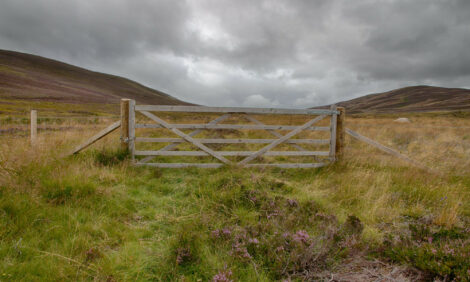



EPP 2012: Focus on Pigs in the Baltic Region
ANALYSIS - The annual congress of the European Pig Producers (EPP) opened in Vilnius today, 30 May, writes senior editor, Jackie Linden.The Lithuanian organisers of this year's EPP Congress can be proud that almost 300 participants from 19 countries have met in their country's capital for the start of its three-day annual meeting. The theme of the meeting – the 22nd in the series – is ‘Pig Production in the Baltic Region – Chances and Challenges'.
In his welcome address, EPP President, Erik Thijssen, stressed that the main purpose of the congress is the exchange of ideas and experiences between participants, and particularly as a meeting place for ‘East meets West’.
With the new regulations on housing now just seven months away, he said the EU pig industry faces its biggest challenge and the likelihood of considerable structural changes. How the industry will look in 2013 is not yet known but it is clear that some EU countries are still along way from 100 per cent compliance with the new directive. How many farmers and how many sows will there be in the EU-27 this time next year, he asked.
Another challenge to the industry identified by Mr Thijssen is the difficulty in obtaining funds or loans for capital investment in the industry at a time of general economic difficulties and uncertainty over the future of the Euro.
Will consumers in the EU be prepared to accept the higher costs of pig meat production in the EU, asked Mr Thijssen, or will imports from third countries fill the gap in demand left by farmers leaving the industry?
Lithuania’s Minister of Agriculture, Kazys Starkevicius, added his welcome to the delegates and outlined his country’ agriculture, stressing that, as one of the newer member states, the pig sector there still receives some support from the EU. As a pig farmer himself, the Minster said he is confident about the continuing development of the industry and that it will achieve its targets.
An overview of Lithuania's agriculture and pig production was given by Algis Baravykas of the host country’s pig producers association. Pig numbers have fallen greatly since the break-up of the Soviet Union and now most of the pork consumed in the country is imported from other EU member states. Interestingly for a country with a relatively high rural population, there is a great deal of opposition to pig farming from the general public, mainly on the grounds of the bad smells.
The economic potential of agriculture generally and particularly pig production in the Baltic region was presented by Mindaugas Jurgelis, an analyst with DNB Bank. He said that last year, agricultural output increased in Lithuania, Latvia and Estonia – by some 10 to 20 per cent, taking into account the change in prices. He showed that pig production declined sharply after the end of the Soviet era but he sees good medium and long–term prospects for growth if productivity can be raised and the market can be expanded.
Dr Yury Kovalev, Director General of Russia’s National Union of Swine Breeders outlined his country’s pig industry. After 1992, the industrial sector declined sharply and in 2005, the state stepped in to support the modernisation of production and processing sectors. Between 2006 and 2011, more than US$8 billion was invested in the industry and pig meat production has increased again in the industrial sector, while backyard farming is dwindling as it is seen as a threat in the control of diseases such as African swine fever (ASF) and other diseases. The Russian industry will be faced with a considerable challenges when the Parliament there ratifies the country’s joining the World Trade Organization (WTO), which is expected in the coming months. As import duties are reduced and removed over the next following years, the pig meat sector will come under increasing pressure from imports.
In Belarus, 96 per cent of farms remain government property and the pig industry retains its structure from the Soviet era, with very little investment over the last 20 years, according to Denis Potapchuk of Consul. The farms are not efficient by Western European standards but they are improving as genetics, health and nutrition are being improved and some of the older farms are being modernised.
The final presentation of the day was on pig production in Poland by Dr Katarzyna Skrzymowska of the country’s pig breeders’ and producers’ association, ‘Polsus’. Poland, too, has experienced a decline in pig population over recent years but there are signs that this is now slowing down and indeed, processors are competing hard for continued local supplies of fatteners. As a result, there is an upward trend in prices. Pork is the favourite meat in Poland but such is the growing threat of poultry meat that Polsus has produced a popular consumer guide to pig production and cooking pork in 2010 and last year, the organisation supported 10 episodes of a TV programme on national public television, extolling the virtues of pig meat.






